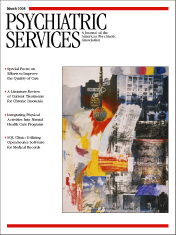Client Violence in Social Work Practice: Prevention, Intervention, and Research
Cristina E. Newhill, associate professor of social work at the University of Pittsburgh since 1990, received her Ph.D. from the University of California in Berkeley. She devoted many years to working, researching, and teaching in the field of social work, with a concentration on client violence and risk management for social workers, that really should be studied also by psychiatrists, psychologists, and other professionals who work with violent clients.
Client Violence in Social Work Practice: Prevention, Intervention, and Research reflects Newhill's vast in-depth knowledge and research findings and offers helpful topical outlines for supervisors and teachers in addition to directions on teaching methods and invaluable content on this aspect of violence. The book includes risk factors, how to make an assessment, how to handle a violent encounter, how to relate to a violent client, and much more. Just as importantly, Newhill urges readers to help their institutions establish safety rules for the protection of all employees and, hopefully, prevent violence in the agencies and clinics. All of us have read in newspapers about a client who attacked staff of a child welfare or mental health organization. How many organizations and therapists have asked themselves what they would do in the event of an attack? For those who teach, the book includes a teaching outline of every important chapter on this scary topic that we don't like to think about until we or one of our supervisees, friends, or colleagues is attacked.
Although Newhill stresses the importance of an empathic approach in treating violent clients, she urges that social workers and other mental health professionals develop defensive skills to use when necessary and that agencies and clinics prepare their staff to handle such situations and provide a safe environment. While Newhill warns therapists not to deny their own fears, she urges them to be aware of how to create as safe an environment as possible. She also discusses important skills in diagnosis. Such skills are especially needed in today's stressful society, given the media's daily revelations of violence internationally, nationally, and locally. We especially confront violence at the local level, given the lack of gun control. In addition, we read too frequently about child abuse, battered women, rape, substance abuse, and people who are so sick and angry that they grab a gun and shoot at random to express their internal turmoil. Too often, we read about children taking guns to school and shooting at teachers and students.
For these reasons, Newhill recommends that trauma therapy be taught to all therapists. In any case, her research findings about violent clients are so urgent that we must be aware of them and be prepared for them. All professionals in the fields of mental health, child welfare, and criminal justice need to be trained to help their colleagues and clients cope with situations in which their violent clients might turn against them. Anger, frustration, and loss of control occur too often to ignore. The current social, economic, and political environment is especially frustrating and leads to acting out in schools, in the streets, and in neighborhoods by damaging property and attacking strangers as well as professionals who represent the agencies toward which these violent individuals project their anger.
Finally, and most important, is Newhill's emphasis on the need to understand clients, especially those who have personality disorders. These clients are the most likely to act out either against others or by seriously harming themselves. Thus all professionals who work with these individuals need the most training, the greatest skills, and the ability both to both supervise others and to take leadership in the handling of violent clients.
Ms. Freed is adjunct professor at Smith College School for Social Work in Northampton, Massachusetts.



